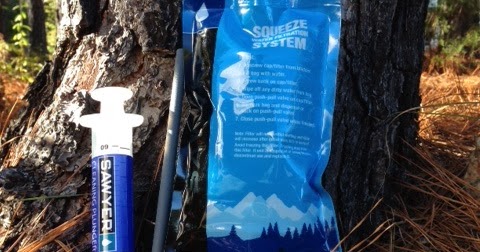shelled, single-cell parasites which include Giardia and Lamblia and range in
size from 5 to 15 microns. This also includes Cryptosporidium Parvum which is 2
to 5 microns in size. Giardia occurs in the small intestine where cysts hatch
and give you diarrhea, gas, nausea, and/or cramps and symptoms appear within 1
to 2 weeks and can last 4-6 weeks or longer. Those with weakened immune systems
could be more heavily impacted. Cryptosporidium can give you similar symptoms
and can also include loose stool, cramps, slight fever, and an upset stomach.
These systems generally appear in 2 to 10 days and typically last 2 weeks.
Animals and humans carry Protozoa.
BACTERIA – Bacteria are smaller
organisms which can include E. Coli, Salmonella, Cholera, and Campylobacter
Jejuni. They range from .2 to 10 microns and symptoms include diarrhea with
appears within 6 hours or 3 to 5 days and last 4 days or longer. Animals and
humans carry Bacteria.
VIRUSES – Viruses represent the
tiniest of organisms ranging from .004 to .1 microns. They include Hepatitis A,
Rotavirus, Norwalk Virus, and even Polio. Although these are the least commonly
found pathogens in the wilderness water sources, they represent often the most
harmful. If you were wondering, most waterborne viruses which affect humans in
the backcountry come from human fecal matter.
CHEMICALS AND RUNOFF – As the name
implies, another water-nasty includes agricultural runoff (herbicides,
pesticides, etc.) and industrial runoff (metals, mine tailings, etc.).



